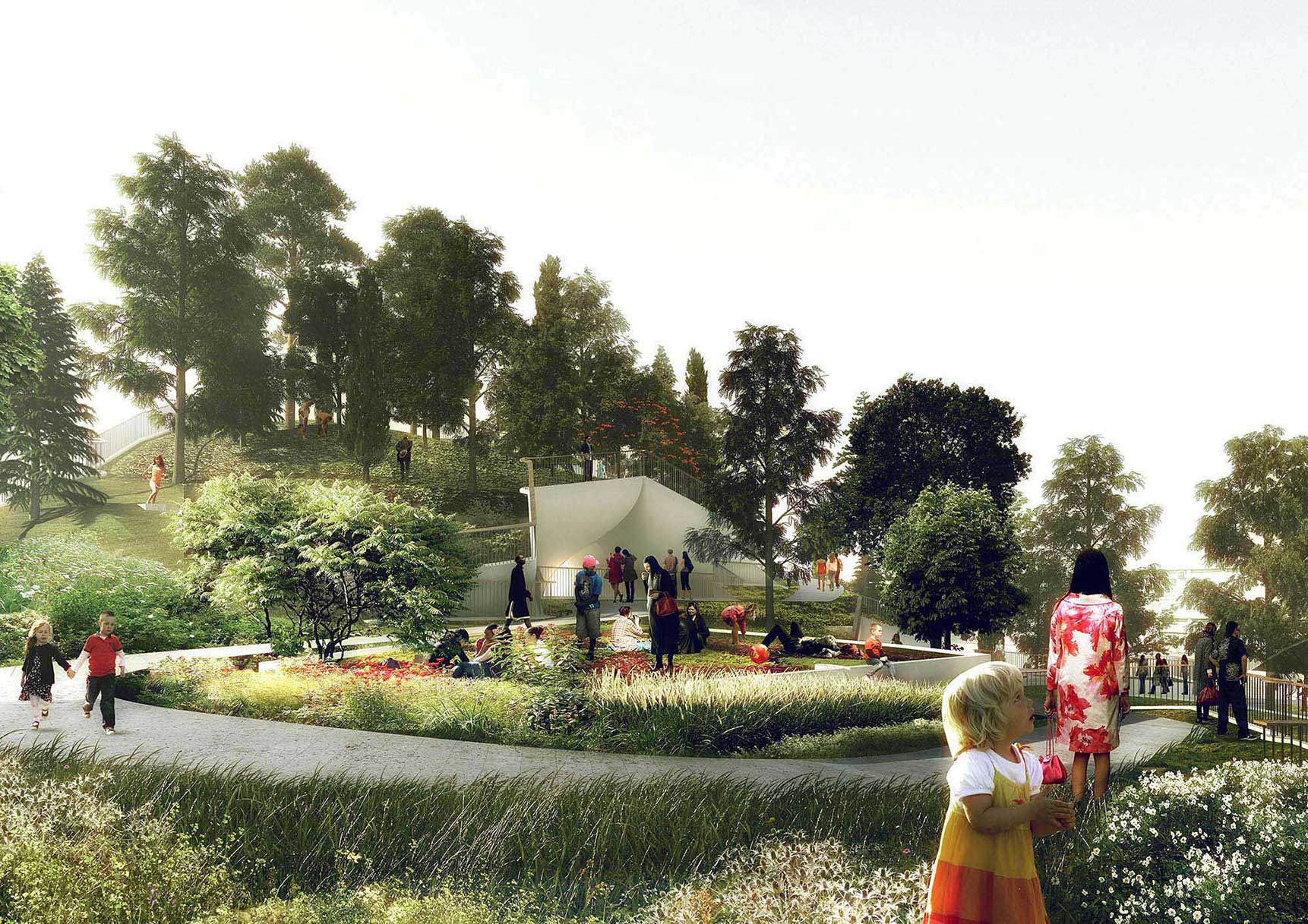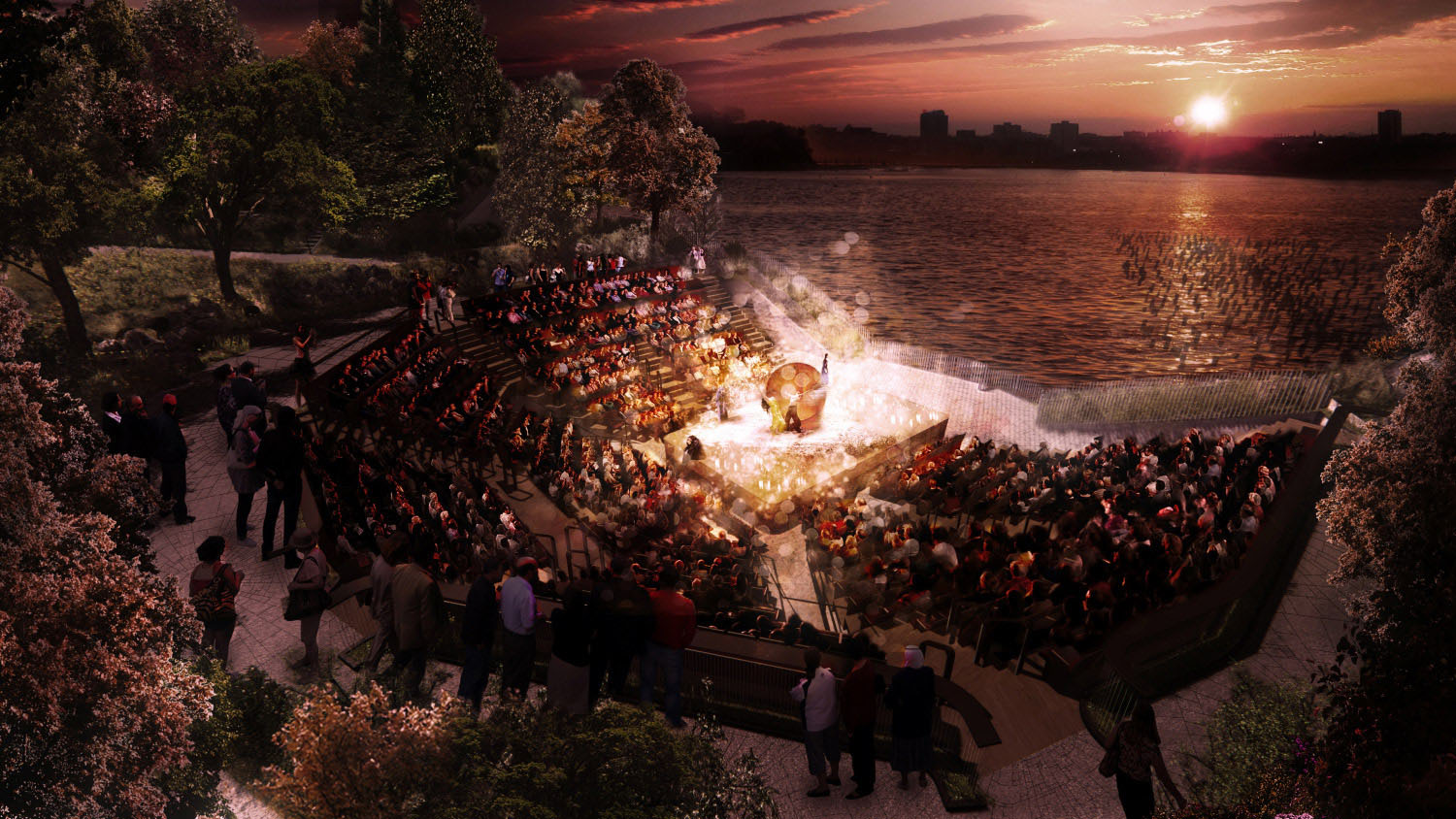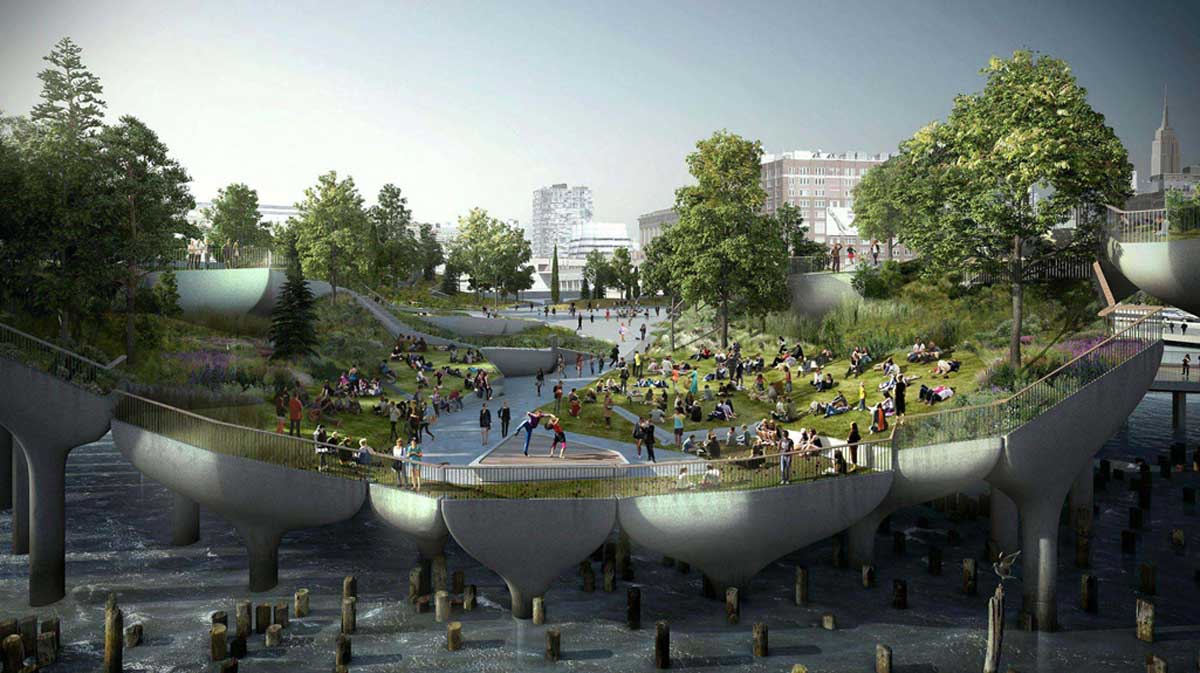Thomas Heatherwick’s Pier 55 park, renamed ‘Little Island’ is nearing completion alongside New York’s Hudson River, just off the shoreline in New York’s Chelsea neighbourhood.
The whimsical 10,000 square metre park is perched atop an undulating array of funnel-shaped concrete pods, designed to evoke the image of a leaf floating on water. In all, 132 planters rise above the water in varying heights – between 15 to 62 feet (4.5 to 18.9 metres) above the river to create a topographical landscape, and enable different views of the city.
Little Island will comprise areas to host community events, including performances, arts and educational programmes.

The Chelsea Piers were once one of New York’s busiest shipping centres at the turn of the 20th century. Not only a popular docking point for passenger ships but a commercial centre for travellers and foreigners who docked there throughout its history,
Opened in 1910, this was the city’s first port, a culmination of 30 years of discussions and 8 years of construction. In 1915, Pier 54 saw the departure of the RMS Lusitania, bound for Liverpool. Five days later, the ship was sunk by torpedoes from nearby German U-boats just off the coast of Ireland.
Three years earlier, the pier’s neighbour, Pier 59, was drawn as the final docking point for the White Star Line ship, the RMS Titanic, which sunk in April of 1912. The surviving passengers, rescued by the nearby Cunard Line ship, the RMS Carpathia, they were delivered to Pier 54 instead, where they were greeted by thousands of onlookers.
Today, several of the piers remain in operation, though Pier 54, remained derelict for a generation.
The steel frame of Cunards former Pier 54 remains fenced off while it serves as a gated access point for construction materials and vehicles to enter from West Street. This historical artifact will be preserved as a contextual piece of New York City’s waterfront history and will serve as one of the park’s two entranceways.

The park will contain a main central lawn and a playground for children, a 700-seat amphitheatre called The Amph, a south-eastern overlook at the tip of the park with 180-degree views, a second stage area with a hidden garden called The Glade, and a southwestern overlook perched 63 feet above the water that is accessed by a winding, tree-lined pathway. This pinnacle will provide visitors with views of the Lower Manhattan skyline and sunsets over the Hudson River.

The British studio has worked with Signe Nielsen of Mathews Nielsen Landscape Architects to design the 2.4-acre- green space to include lawns, paths and rolling hills. It is also set to be home to 100 species of trees and shrubs.
The nearest subway stop is the 14th Street station at the intersection of Eighth Avenue and West 14th Street, with access to the A, C, E, and L trains. From the subway station, people will have to walk west two avenues to reach West Street and Hudson River Park.

The Diller-von Furstenberg Family Foundation is funding the project.
“It’s a joyous feeling to see Little Island rise up in the Hudson River, and now I can’t wait for New Yorkers and its visitors to cross the bridge, leave the boisterous city behind, and play, lay back and be stimulated every which way by the Island,” said media mogul Barry Diller, co-founder of Diller-von Furstenberg Family Foundation.
Little Island is planned to open this spring.

